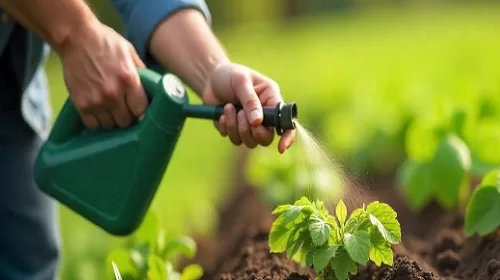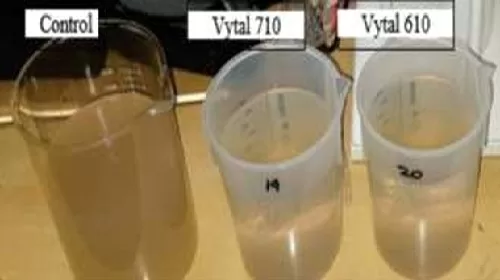By Dushyant Jindal, Co-Founder, Hitech Enviro Solutions
Water is of paramount importance for the existence of life on planet Earth. It is essential for the survival itself as well as for most of the activities of human civilisations, be it manufacturing, agriculture, generating electricity or keeping and maintaining the health and wealth of the beings.
Although the planet Earth’s surface is covered by nearly two thirds of water, there is not enough of it which can be accessed for the purpose of drinking, household activities or industrial activities. A large portion of population around the globe is devoid of clean drinking water. Moreover, this problem and this huge gap is increased by Non-Revenue Water (NRW).
Non- Revenue Water is the water that has been produced and lost before it reaches the customer due to several reasons. This water is unaccounted hence causing wastage of huge financial costs incurred on treating and pumping that water as well as the loss of revenue that could have been earned through selling that water. If these water losses could be reduced, then more of the human beings could get access to the clean water and water utilities could earn more. High levels of NRW are detrimental to the financial viability of water utilities as well as to the quality of water itself. Hence, there arises the need for NRW management.
The NRW can occur through physical losses from leaking and broken pipes, which are caused by poor operations and maintenance, lack of active leakage control and poor quality of underground assets. Or these losses can be of apparent nature arising out of theft or metering inaccuracies.
The International Water Association (IWA) has developed a detailed methodology to assess the various components of NRW. Accordingly, NRW has the following components:
-Unbilled authorized consumption
– Apparent losses (water theft and metering inaccuracies)
– Real losses (from transmission mains, storage facilities, distribution mains or service connections)
In many utilities the exact breakdown of NRW components and sub-components is simply not known, making it difficult to decide about the best course of action to reduce NRW. Metering of water use at the level of production (wells, bulk water supply), at key points in the distribution network and for consumers is essential to estimate levels of NRW.
The International Energy Agency has estimated that 34% of all water worldwide becomes nonrevenue water. The World Bank has estimated the total cost of NRW to utilities worldwide at US$14 billion per year. Reducing by half the current levels of losses in developing countries, where relative losses are highest, could generate an estimated US$2.9 billion in cash and serve an additional 90 million people. The problem varies by region. Average NRW in India is around 38%; just above the global average range of 30% to 35% reported by the World Bank. Mexico and Denmark have 51% of non-revenue water, respectively, the two extremes. A challenge in many utilities is pinpointing the breakdown of NRW components and With a faster and more efficient leak detection, you reduce your cost per identified leak and can find the low-hanging fruits for reducing your Non-Revenue Water. Detailed knowledge about high-risk installations with possible leaks and the overall condition of your network will also enable you to prioritize your daily efforts to when and where they will have the biggest impact.
Leaks in resource transmission pipelines is a growing concern for the water transmission industry. This creates a need to prevent the threat of leaks and minimize their damages through extensive research in leak detection technology.
Leak detection technologies:
Multiple technologies have been developed throughout the years to help identify and locate leaks within water networks.
Listening devices: These devices rely on the high-frequency acoustic signals sent by the release of pressurized fluids, to detect leak existence and leak locations. Sound frequencies are then amplified and filtered at 1 kHz using a preamplifier to remove high-frequency noises that are not related to the network.
• Geophones: Both electrical and mechanical geophones are used to listen to buried water pipelines from the surface. These devices are accurate and highly sensitive that they can detect the exact location of the leak however,the accuracy of geophones depends highly on the proficiency and the experience of the operator, and it also might fail to detect some leak classes.
• Hydrophones try to listen to leaks by sometimes being placed in the system and rarely on the surface of the ground. Hydrophones can be more accurate than geophones in detecting leaks, but they require more training than geophones to operate.
-Leak noise loggers: A logger system is usually composed of a set of loggers that are placed throughout the network, a communication base that delivers collected data, and an analysis base that can be a desktop computer or a cloud engine using big data platforms. Leak Noise loggers are placed in utility holes without any trenching or drilling; they can be used as a permanent monitoring, semi-permanent monitoring, or leak surveying technique.
– Infrared thermography: Thermography (IR) camera measures and images the emitted infrared radiation from an object. It can detect thermal contrasts on pavement surface due to water leaks. This technology has been tested on non-metallic pipelines and has shown accurate results, yet these results were not as accurate as the results provided by acoustic technologies such as geophones and are unreliable under the cases of damaged pipelines. Furthermore, IR Camera requires marking of the pipeline on the ground surface so that the machine can move above the pipeline. Also, the machine is profoundly affected by the surrounding weather and any variations in soil conditions and temperature. –Tracer gas: Tracer gasses is a leak detection technique that utilizes pressurizing nontoxic and insoluble gasses into leaks, these gasses contain ammonia, halogens, and helium, where helium is the most sensitive. Given that the utilized gasses are lighter than air they will tend to go out through leaks and then seep out through the soil or pavements. Later on, these gasses are traced and detected using a man operated detector to identify the locations of leaks through detecting the seepage of tracer gasses –Ground penetrating radar: The Ground Penetrating Radar (GPR) technology utilizes electromagnetic waves (between 125 MHz and 370 MHz) and transmits them into the ground to identify leak location via imaging the sub-terrain including the pipe and the leak. The advantages of this technology lie in its capability to detect leaks regardless of the material of the pipe, for any diameter size above one inch and reaching to a depth of 5 m. Furthermore, this device can be easily transported between sites, and it does not require a lot of experience or training on behalf of the operator to operate it.
–Leak detecting robots: Multiple robotic devices were developed to perform in pipe inspection and determine leak locations in sewers. These devices can be wireless devices or cord connected. Furthermore, some leak detection robots can also perform leak repair tasks. One example to present in leak detection robots is “smart ball”.
• Smart-Ball is a free-swimming technology developed to detect leaks from within live large water pipelines. Smart-ball technology is composed of a foam ball with an aluminium alloy core, within the aluminium core, a highly sensitive detection instrument is placed. Smart ball does not create any noise when passing through the pipeline. Movement of Smart-Ball within a pipeline with results.
–Wireless micro-electro-mechanical systems (MEMS): Micro-ElectroMechanical Systems are microfabricated mechanical and electro-mechanical devices and structures. MEMS are usually composed of four main elements:
• Micro-Sensors
• Micro-Actuators
• Micro-Electronics
• Micro-Structures
Multiple types of MEMS were used in leak detection of water mains mainly accelerometers, acoustic, and thermal. MEMS technology provides continuous water network monitoring for any leaks from the moment they are placed. MEMS have proven to be cost-effective tools when it comes to the detection of leaks with their low cost and high sensitivity to signal anomalies. On the other hand, MEMS are viable when used in metallic pipelines.
Benefits of NRW Reduction Benefits of NRW reduction and leakage reduction, include
• Financial gains from increased water sales or reduced water production, including possibly the delay of costly capacity expansion
• Increased knowledge about the distribution system
• Reduced property damage
• Reduced risk of contamination
• More stabilised water pressure throughout the system.




